The Green Revolution: How Heat Pumps Are Driving Sustainability in Modern Energy
The green revolution how heat pumps are driving sustainability is a critical question as we confront the climate crisis. Heat pumps offer a practical solution: they work more efficiently than traditional systems and play a significant role in reducing our carbon footprint. This article examines the sophisticated mechanisms heat pumps use to provide eco-friendly heating and cooling, revealing why they’re becoming a pivotal feature of sustainable energy strategies.
Key Takeaways
-
Heat pumps are integral to sustainable development, providing efficient heating and cooling by transferring heat rather than generating it, which can reduce electricity consumption by about 60-75% compared to traditional systems.
-
Technological advancements in heat pumps, such as improved heat exchangers, eco-friendly refrigerants, and integration with renewable energy, have further enhanced their efficiency and environmental benefits.
-
Despite potential barriers such as higher initial costs and performance challenges in cold weather, heat pumps offer significant long-term savings and reduced greenhouse gas emissions, which can be addressed through educational efforts and advanced technologies.
The Role of Heat Pumps in Sustainable Development
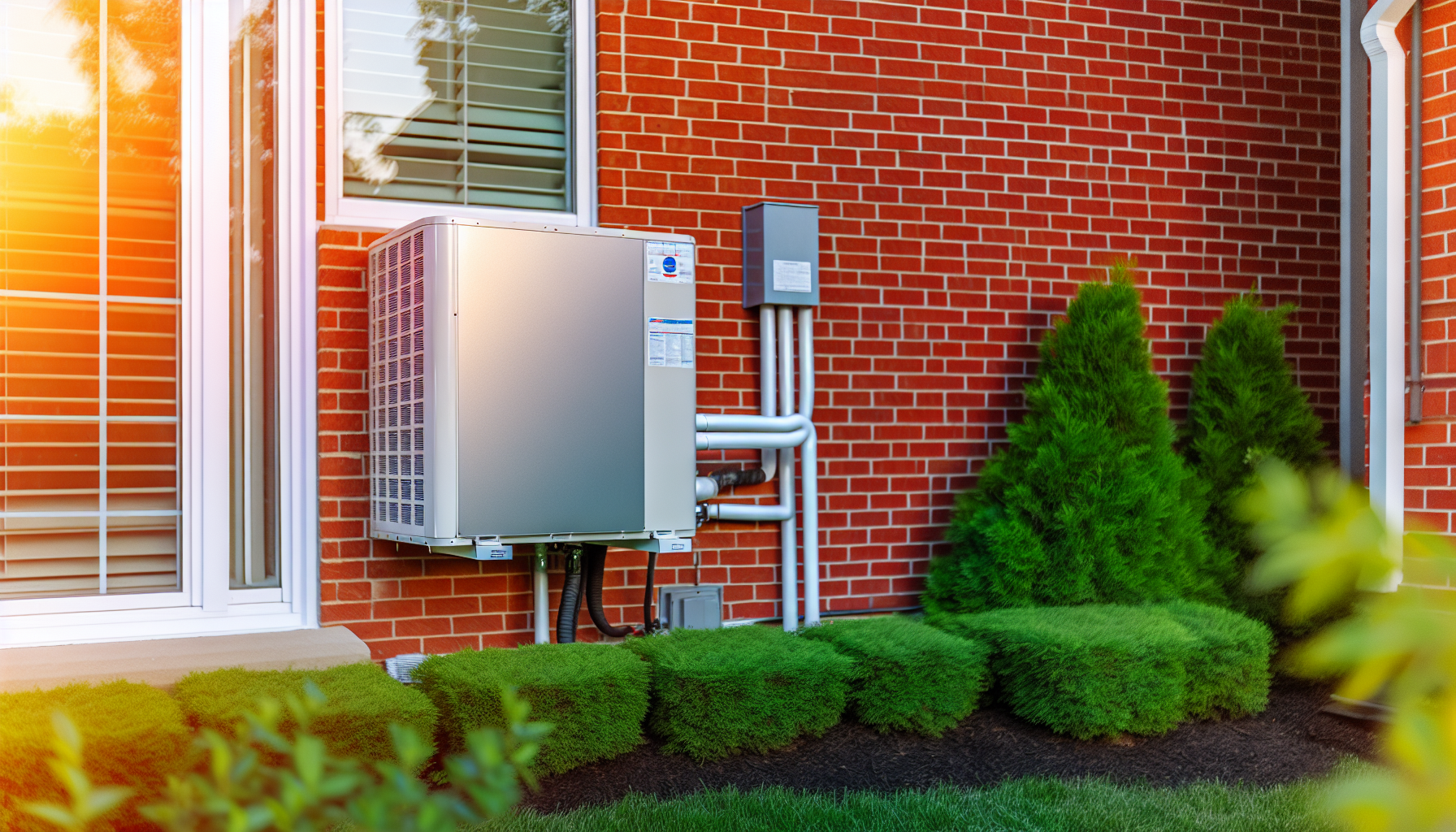
Heat pumps hold a significant place in sustainable development. Harnessing the principles of physics, they deliver comfortable temperatures in your home while consuming approximately 60 to 75% less electricity than traditional electric hot water systems. The secret lies in their modus operandi - rather than directly heating the water using an electric element, heat pumps use electricity solely to drive the compressor and the fan. This results in a significant improvement in efficiency, making heat pump water heaters a shining example of this wonder technology.
Not only in residential settings, but heat pumps also find extensive applications across various sectors in Australia. Heat pumps are widely utilized for:
-
Space heating/cooling
-
Hot water systems
-
Air-conditioning
-
Potable water cooling
-
Space heating
-
Heat pump water heaters
Heat pumps also find significant usage in industrial applications, where they utilize waste heat flows to their advantage. During the cooling season, they transfer heat from indoors to the outside environment, thereby ensuring optimal temperature control.
The refrigeration cycle allows heat pumps to extract heat from the surrounding air or water. Water source heat pumps are a fine example of this technology. This cycle transforms ambient energy into heat by transferring it to a refrigerant in the evaporator. A compressor then elevates the refrigerant’s temperature, and the condenser disperses the heat into the home’s heating system or domestic hot water system. In this way, heat pumps provide an energy-efficient substitute for furnaces and air conditioners in all climates, thereby significantly contributing to sustainable development by decreasing electricity usage and delivering effective heating and cooling.
Unpacking the Sustainability of Heat Pumps
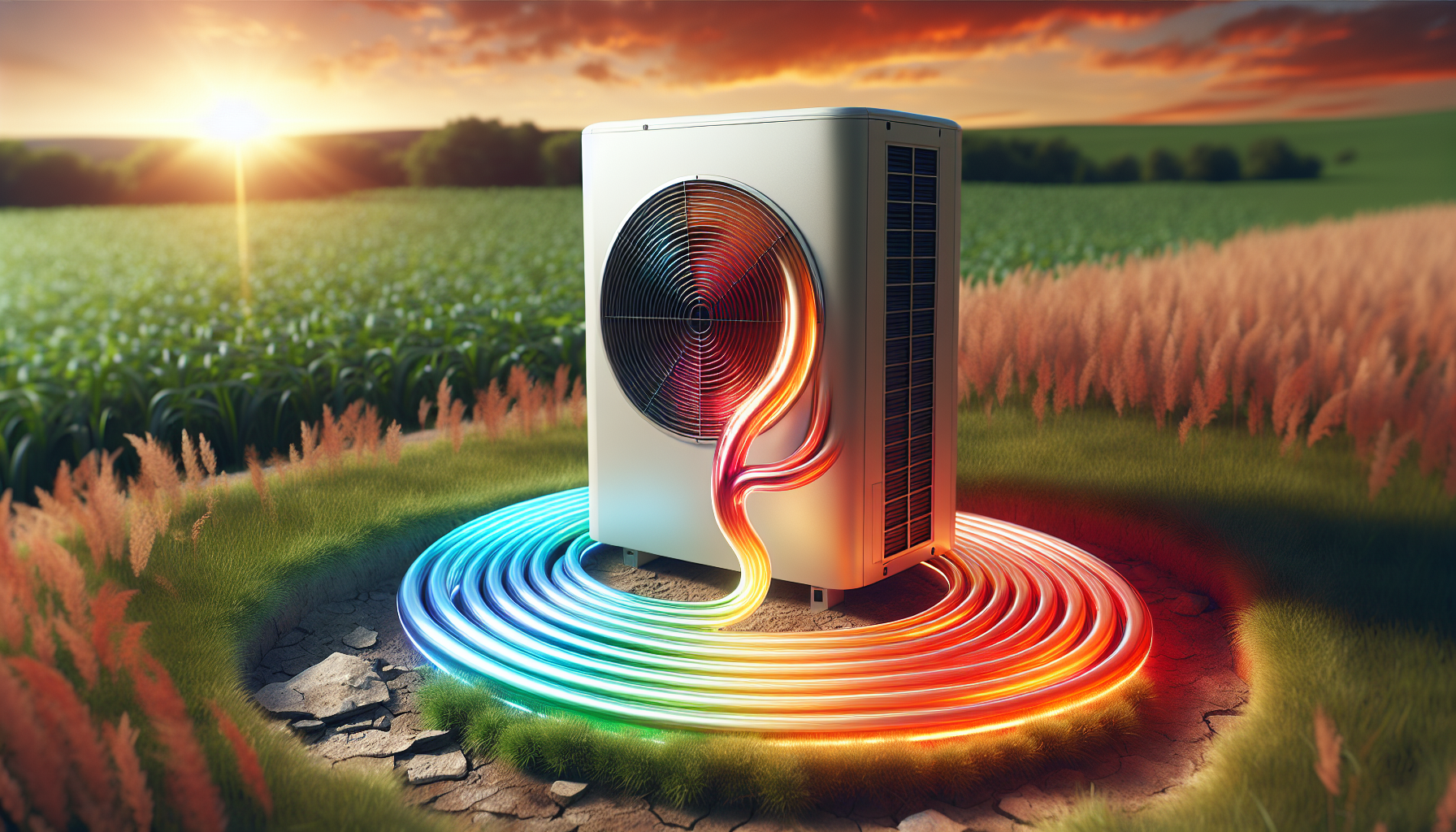
Diving deeper into the sustainability of heat pumps, we find that these systems exhibit an exceptional ability to extract heat from the environment, transfer heat efficiently, and reduce greenhouse gas emissions. The extraction process involves transferring heat from the environment into the refrigerant at the evaporator, a characteristic feature of various types of heat pumps, including the prevalent air-source heat pumps and advanced systems such as CO2 heat pumps that employ supercritical carbon dioxide as a refrigerant.
These systems can efficiently heat water for domestic use.
How Heat Pumps Extract Heat
Heat pumps work by absorbing heat energy from warmer areas and transferring it to cooler regions. This ability to absorbs heat from a variety of sources and transfer it indoors lends heat pumps their versatility. Heat pumps can provide heating and cooling throughout various seasons, and their high efficiency enables them to produce 3 to 4 times more energy than they consume.
Their efficiency is significantly boosted by this heat extraction process. Heat pumps have the capability to achieve efficiency levels of 300-400%, surpassing the 90-95% efficiency of typical boilers.
The Refrigeration Cycle: Transferring Heat Efficiently
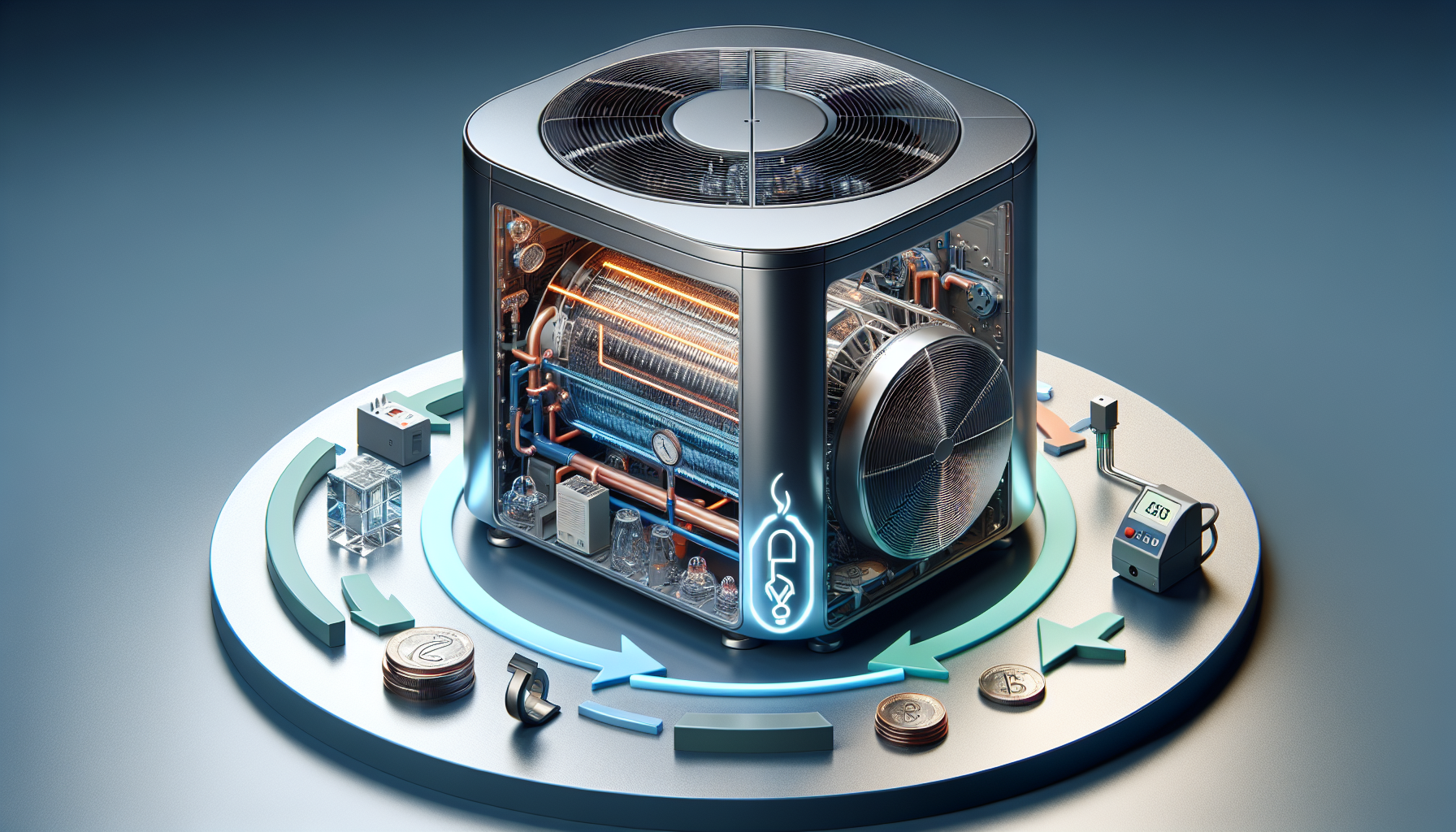
The refrigeration cycle plays a key role in the efficient heat transfer of heat pumps. This process includes:
-
The refrigerant absorbing environmental heat at the evaporator
-
Being compressed to a higher temperature
-
Releasing its heat into the system at the condenser before being re-circulated
The efficiency of this process is measured by the coefficient of performance (COP), sometimes seasonal, with higher-efficiency heat pumps dehumidifying better and using less energy, particularly in the summer months.
Ground source heat pumps are an example of this technology, utilizing the ground source heat pump system for efficient heating and cooling.
Reducing Greenhouse Gas Emissions
Heat pumps excel in their ability to reduce greenhouse gas emissions. Their enhanced operational efficiency in comparison to conventional heating methods results in lower energy consumption. For instance, compared to electric resistance heating, heat pumps can lower electricity usage for heating by about 65%.
Furthermore, the utilization of refrigerants such as CO2 can elevate the Coefficient of Performance (COP) and further diminish the environmental impact. This makes the transition to heat pumps a sustainable choice for heating and cooling.
Advancements in Heat Pump Technology
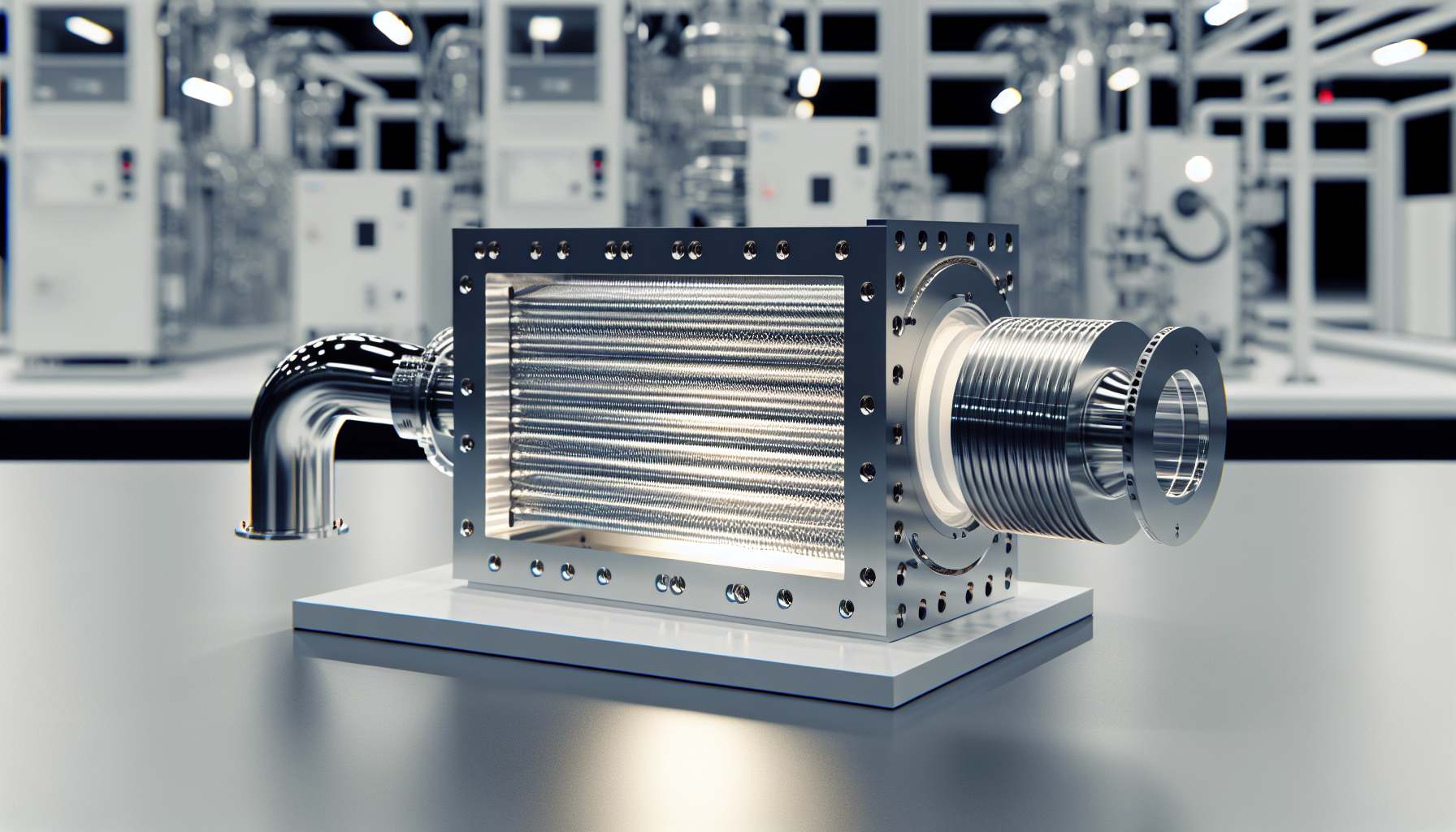
The recent years have witnessed numerous technological advancements in heat pumps, all aimed at boosting their efficiency and overall performance. These include innovative heat exchanger designs, the use of eco-friendly refrigerants, and integration with renewable energy sources.
Innovations in Heat Exchanger Design
Recent advancements in heat exchanger design for heat pumps include:
-
SWEP’s pioneering plate design featuring X-plates for effective heat exchange and a configuration that amplifies heat transfer while minimizing refrigerant needs
-
Incorporating metal materials such as copper and aluminum
-
Introducing innovations like aluminum vertical flat tube (VFT) to enhance heat exchanger efficiency.
Eco-Friendly Refrigerants
Heat pump systems are currently integrating eco-friendly refrigerants such as:
-
R134a
-
R1234yf
-
R410A
-
R407C
-
CO2 (R744)
-
ammonia (R717)
-
propane (R290)
These refrigerants contribute to the enhancement of heat pump performance by potentially increasing the Coefficient of Performance (COP) and strengthening the systems’ low carbon footprint due to their lower Global Warming Potential (GWP) values.
Integration with Renewable Energy Sources
For improved sustainability, heat pumps can be coupled with renewable energy sources. This integration involves the efficient adoption of heat pumps and maximizes investments in power/heat production, storage, and transmission capacities.
Some of the obstacles associated with this integration can be addressed by connecting heat pumps with energy storage, which replaces fossil fuel heating and enhances compatibility with renewable energy inputs.
Heat Pumps in Residential and Commercial Spaces
Heat pumps are gaining popularity in both residential and commercial environments. Their application extends to:
-
Providing domestic hot water through air source heat pumps
-
Large-scale heating through geothermal heat pumps
-
Community-wide sustainable heating solutions through district heating networks powered by heat pumps.
Air Source Heat Pumps for Domestic Hot Water
Air source heat pumps are a popular choice for providing domestic hot water, especially with the use of a heat pump water heater. They operate by utilizing a refrigeration cycle to draw heat from the ambient air, subsequently employing a heat exchanger to heat the water. Their efficiency generally ranges from 200-400%, with minimal installation requirements.
What’s more, these systems are capable of extracting sufficient energy from outdoor temperatures as low as -20°C, establishing them as a dependable heating solution in cold weather.
Geothermal Heat Pumps for Large-Scale Heating
Geothermal heat pumps are a go-to solution for large-scale heating applications. They facilitate large-scale heating by:
-
Tapping into the earth’s thermal energy
-
Employing advanced predictive control systems to ensure efficient heating
-
Extracting heat from the ground using a network of buried pipes.
Depending on the installation method, these pumps are classified into those with pipework inserted into deep boreholes and those with pipework laid horizontally near the surface. This technology offers a virtually maintenance-free solution that harnesses the nearly limitless energy supply available from the ground.
District Heating Networks Powered by Heat Pumps
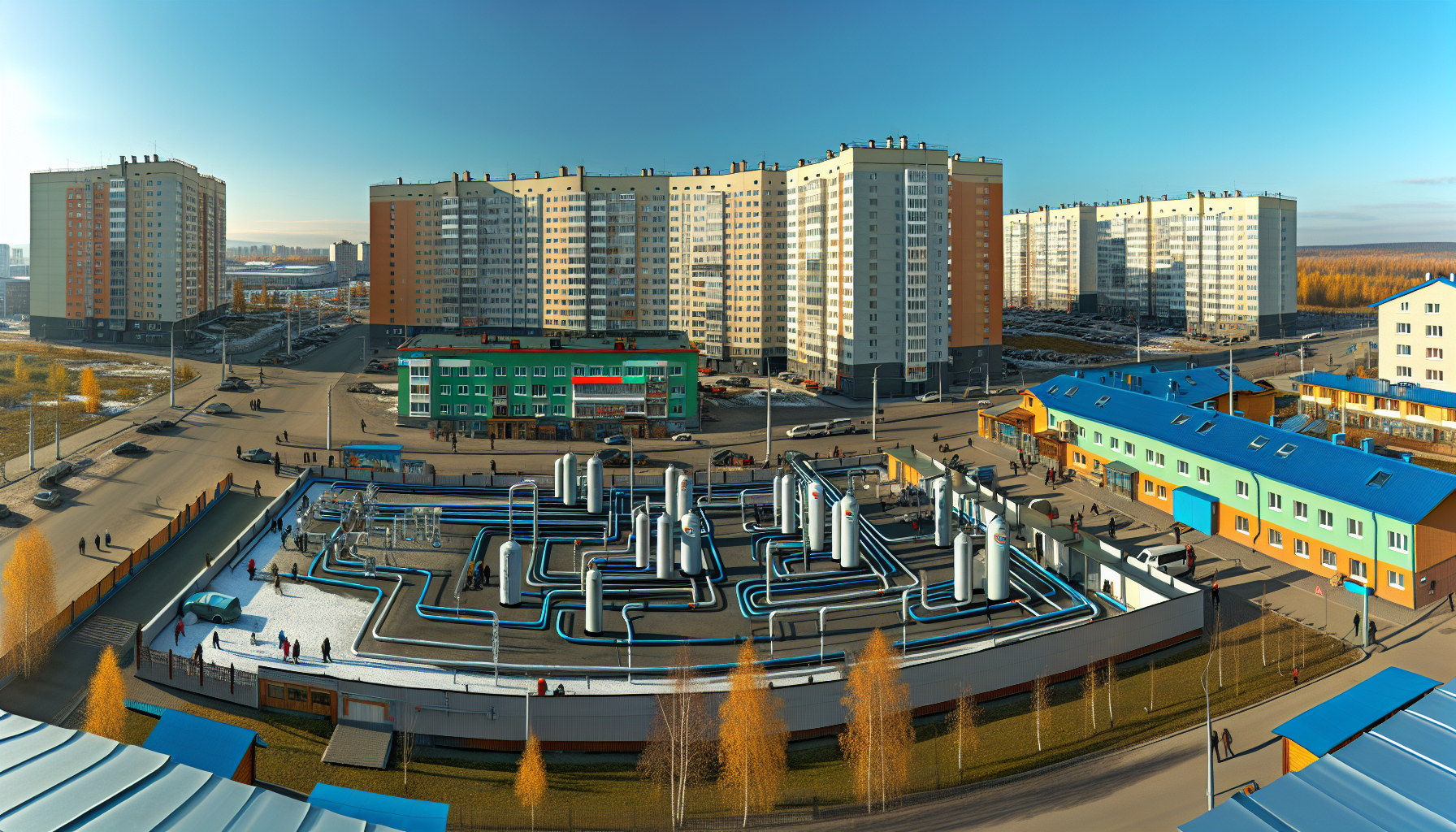
Last but not least, district heating networks powered by heat pumps are revolutionizing community-wide heating solutions. Large-scale heat pumps are utilized to offer sustainable heating solutions for entire communities. These networks use a variety of heat pumps, including air source heat pumps, geothermal heat pumps, and large heat pumps capable of providing 100°C heat.
The advantages of utilizing heat pumps in district heating networks are manifold:
-
Offering both heating and cooling from a single low-temperature network
-
Utilizing waste heat sources
-
Increasing security of supply
-
Reducing costs
-
Lowering greenhouse gas emissions.
Economic Benefits of Heat Pumps
Heat pumps offer substantial economic advantages to those who invest in them. These include lower energy bills due to their high efficiency, reduced installation costs, and incentives, and substantial long-term savings and return on investment.
Lower Energy Bills with High Efficiency Heat Pumps
For those seeking to cut down their energy bills, high-efficiency heat pumps are a godsend. By delivering heating and cooling in a more efficient manner by utilizing heat transfer instead of heat generation, these systems can lead to a significant reduction in energy usage when compared to traditional heating systems. A heat pump is considered highly efficient when it has an HSPF rating of at least 8.2, and the most premium models can operate at 600% efficiency. Users may anticipate a reduction of approximately 20-40% on annual heating and cooling bills, leading to an average 60-85% decrease in energy costs compared to an electric fan heater or traditional electric hot water service.
Reduced Installation Costs and Incentives
Despite the initial investment required for heat pump systems, the reduced installation costs and available incentives make them an affordable and accessible option. The typical expenditure for installing a heat pump system ranges from approximately $1,500 to $5,000 for the system itself, with an average installation cost of $5,900. The installation costs for geothermal heat pumps, which are significantly higher than those for air-source heat pumps, indicate that the choice of heat pump type has a considerable impact on upfront costs.
Long-Term Savings and Return on Investment
Given the long-term savings and impressive return on investment, heat pumps are a smart choice for both homeowners and businesses alike. Typically, it takes between 3-5 years for a heat pump to recover its initial costs through energy savings.
Heat pump systems have the potential to deliver substantial long-term cost savings, with the ability to save households approximately USD 300 annually or reduce energy expenses by as much as 90%, offering significant financial benefits over the system’s lifespan.
Overcoming Barriers to Heat Pump Adoption
Despite their many advantages, the adoption of heat pumps encounters several obstacles. These include their performance in cold weather, initial costs compared to long-term benefits, and public perception and awareness.
However, these challenges can be effectively addressed, paving the way for wider heat pump adoption.
Performance in Cold Weather
Advanced technology and correct installation can boost the performance of heat pumps in cold weather. Heat pumps are designed to operate in colder climates by utilizing refrigerant gases with low boiling points to extract heat from the outside air. However, in colder weather, the thermal efficiency of the heat pump decreases, leading to increased electrical power consumption as the pump works harder to extract heat from the cold air.
Advanced technologies that can enhance heat pump performance in cold weather include:
-
Inverter technology
-
Advancements in refrigerant composition and volume
-
Improved compressor technology
-
Better insulation
-
Variable speed heat pumps
Initial Costs vs. Long-Term Benefits
Making consumers aware of the long-term benefits of heat pumps can alleviate concerns about the initial costs. While the typical initial investment required for the installation of a heat pump system is higher in comparison to traditional heating systems, heat pumps provide superior energy efficiency, decreased maintenance requirements, and various long-term advantages.
Routine preventative maintenance should be performed annually and generally costs between $80 and $130 per unit, plus $25. Over time, these systems offer significant cost savings, with the potential to reduce households’ annual energy costs by approximately 60-85%.
Public Perception and Awareness
Public perception and awareness play a pivotal role in the widespread adoption of heat pumps. While some individuals do not perceive any added advantages compared to traditional gas boilers, those who have chosen heat pumps typically regard them as:
-
secure
-
dependable
-
quiet
-
efficient
Education plays a crucial role in informing the public about heat pumps, raising awareness of their benefits, and ultimately driving adoption of this environmentally friendly heating technology.
Proven effective marketing strategies for promoting heat pumps include:
-
Personalized engagement with targeted customers
-
Promoting weatherization as part of heat pump installation
-
Stimulating proactive demand
-
Increasing consumer education to foster awareness
Summary
In conclusion, heat pumps are a revolutionary technology that offers a sustainable, energy-efficient, and cost-effective solution for heating and cooling needs. Whether it’s their role in sustainable development, their efficiency in heat extraction and transfer, their contribution to reducing greenhouse gas emissions, the advancements in their technology, their application in residential and commercial spaces, or their economic benefits, heat pumps clearly stand out as a superior choice for both homeowners and businesses. With continued advancements and increased public awareness, the adoption of heat pumps is set to rise, paving the way for a greener and more sustainable future.
Frequently Asked Questions
How are heat pumps sustainable?
Heat pumps are sustainable because they rely on renewable energy sources, produce low or no carbon dioxide emissions, and help reduce greenhouse gas emissions, making them an environmentally friendly heating alternative. This is a crucial step toward a more sustainable and eco-friendly future.
Do heat pumps contribute to climate change?
Yes, heat pumps reduce greenhouse gas emissions by 70% compared to traditional heating and cooling methods, making them a viable option to combat climate change in your own home.
Why are heat pumps renewable energy?
Heat pumps are considered renewable energy because they utilize sources like the ground or air instead of burning fossil fuels, resulting in more efficient heat production at a lower cost.
What is the advantage of using a heat pump in a sustainable domestic heating system?
Using a heat pump in a sustainable domestic heating system offers the advantage of using much more sustainable sources of energy, putting less strain on the planet's resources and helping to protect the environment. It also uses electricity, including from alternative sources like solar power, and produces no emissions, making it more environmentally-friendly than traditional heating systems.
How do heat pumps extract heat?
Heat pumps extract heat by capturing heat energy from a higher temperature region and transferring it to a lower temperature region. This is the fundamental principle behind their operation.








